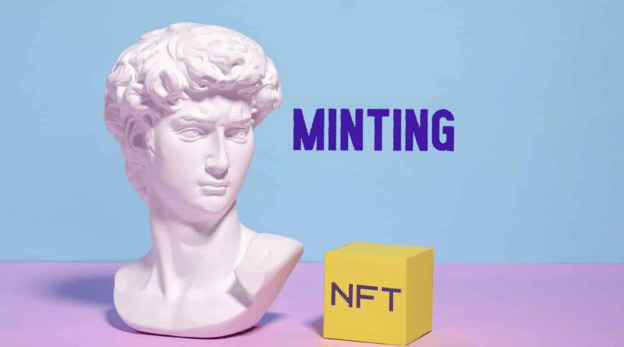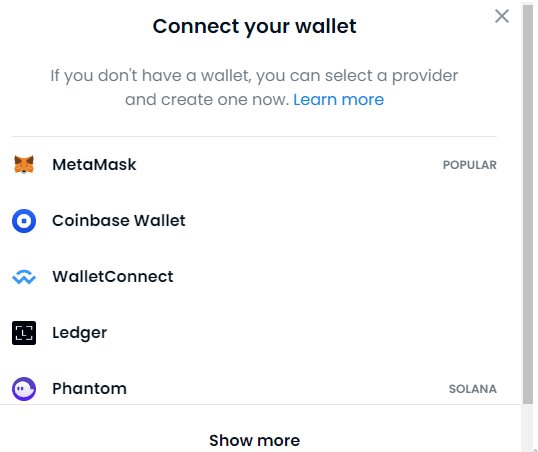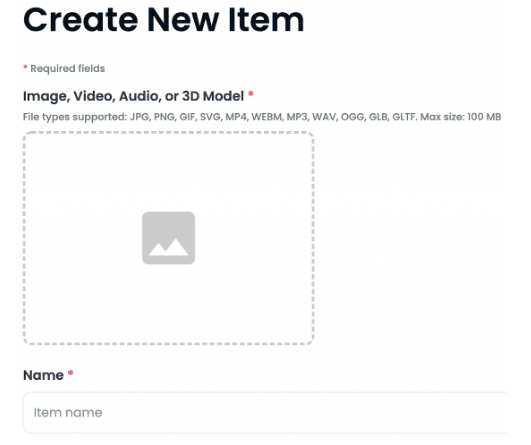
NFTs (Non-Fungible Tokens) have emerged as one of the breakthroughs over the recent years and they have been making headlines on many platforms. Many artists, creators, and corporate giants have jumped into the movement. One of the major steps needed in creating an NFT is minting. In this blog, we have compiled everything you need to know about minting NFT.
What is Minting NFT?
An NFT is a token stored on the blockchain that proves the ownership of a digital asset such as an image, video, or even physical asset. NFT minting is the process of converting digital files into digital assets or crypto collections stored on the blockchain.
The digital items are stored in a distributed ledger or decentralized database and they cannot be edited, modified, or deleted. Just like the creation of fiat currency, where a manufacturer mints a physical coin, the process of uploading an item to the blockchain is known as minting.
You might have heard some people ask, “why can’t I simply screenshot an NFT?”
NFT minting stores the NFT on the blockchain where its ownership and authenticity are established. And since blockchain records can’t be edited, minting NFT marks the beginning of the immutable history of an NFT.
Thus, minting NFT is another name for “store on the blockchain.”
NFT Minting for Creators
For creators, minting NFTs allows them to establish verified ownership and provable scarcity over their work. It also allows them to start earning ongoing creator royalties. Creators are now able to publish limited-edition digital works, and the validation of their authenticity is done on the blockchain. Ownership is public and undisputed, helping creators to build communities and special perks for their NFT holders. Minting NFT also allows the creator to set “creator fees” and earn whenever the NFT is resold in the secondary market. Note that this process is automated, hence, no or only little intervention will be required from the creator once set. On OpenSea for example, the creators can earn a royalty of up to 10% of every sale after the initial sale.
Minting NFTs for Collectors
Minting NFT is not for creators alone. Most NFT projects grant early access to their NFTs via NFT minting. Once you mint an NFT from a project, you become the first-ever owner of that NFT because the mint is when it is written on the blockchain. Oftentimes, taking part in a project’s mint is similar to purchasing Pokémon cards; you don’t know whether you will end up with something rare.
Join our Telegram Channel Today, and Start making Big Profits
Join Now
How to Mint NFTs
The process of minting NFT is done on an NFT marketplace. Examples of NFT marketplaces include OpenSea, Rarible, and Magic Eden. Although there are slight variations in minting NFT, the process is almost the same on all NFT marketplaces. Let’s demonstrate the process of minting NFTs on OpenSea, the largest NFT marketplace:
Step 1: Connect your wallet
The NFT marketplace will require you to create a crypto wallet and connect it to the platform to start minting NFT. On OpenSea, you can click either the “Wallet” icon or the “Create” button under Profile to start creating a crypto wallet. Other NFT marketplaces will also take you through the same steps to set up a crypto wallet for minting NFT.
OpenSea is compatible with various types of crypto wallets. You will be presented with a window prompting you to choose the crypto wallet you need to connect to OpenSea.

Depending on the type of wallet you are using, such as Coinbase or MetaMask, and the device you are using, such as desktop or mobile, OpenSea will ask you to download the wallet on your computer or scan a QR code scanner on your phone.
Once you connect your crypto wallet and create your marketplace profile, go ahead and complete the profile. Describe yourself, add links to your social media pages and website, and specify the cryptos that you will accept as payment when someone purchases your NFTs. After that, you can start minting NFT.
Step 2: Create your first NFT
It is now time to start minting NFT. Click the “Create” button on the home screen of the marketplace. You will be prompted to upload a file and give a name to the NFT. There will also be optional fields for describing your work, external links to more info, and the blockchain network to base the NFT (such as Ethereum or Polygon).

It is also where you should set up the amount you need to earn as royalties for each resale after minting NFT. It is recommended you set a value of between 5% and 10%. Click the “Complete” button to complete the process of minting NFT.
Step 3: Ensure your wallet is funded
After NFT minting, you will need to list the NFT for sale. Selling an NFT (which involves recording that a transaction has taken place between a buyer and a seller on the blockchain), requires the blockchain network to do some computing. The transaction costs some money known as a “gas fee.” Find out the amount of transaction fee you are required to pay as some can be high than you expect.
To complete minting NFT, ensure that your crypto wallet is funded with some ETH or any other crypto that you plan to use. You can purchase ETH from crypto exchanges such as Coinbase and deposit it into your wallet. OpenSea allows you to transfer crypto from your wallet to the marketplace account for minting NFTs. OpenSea also allows you to buy NFTs directly from your marketplace account by setting up a payment method like a credit card.
If you don’t know the amount of crypto that you will pay, it will be calculated automatically for you in our next step of the minting NFT process.
Step 4: List the NFT for Sale
After minting NFT, you will be ready to sell it on the NFT marketplace. Open the NFT description page and click the “Sell” button.
You will be prompted to specify the details of the sale. Choose whether to sell the NFT through a fixed sale or a timed auction. OpenSea asks you to set the royalty payouts in the next step, but other NFT marketplaces may require you to do it at this step. You will also be shown any fees related to selling NFTs. OpenSea charges a service fee, that is, the price of handling the listing, of 2.5% of the selling price of the NFT.
Join our Telegram Channel Today, and Start making Big Profits
Join Now
You can complete listing the NFT by clicking “Complete listing.” OpenSea will calculate the gas fee depending on the activity level of the cryptocurrency network at that time and request payment from your crypto wallet. Note that the gas fee varies from minute to minute. After the gas fee is paid, you will be required to approve the final terms and the NFT will be listed for sale on the NFT marketplace. That is how the process of minting NFT works.
Step 5: Manage your NFT business
After minting NFT and listing it for sale, you should begin to engage your potential customers. You can also continue minting NFTs and adding them to your collection of NFTs. This may attract the attention of art collectors or speculators. Note that after minting NFT on one marketplace, you can transfer it for sale on another NFT marketplace. However, you may incur some charges for this.
Note that by interacting with users and collectors on an NFT marketplace, you will be building rapport, which is good for promoting your new business. Closely monitor the activities on your NFT creations, look for feedback, and continue minting NFTs for digital collectors to buy.
Is Minting NFTs a Get-Rich-Quick Scheme?
Although there are reports of people making big, easy money minting NFT, it’s worth noting that we are still in the early days of the NFT movement. The online creator economy was one of the early adopters of NFTs, and the ability to make money long after the original sale, that is, NFT royalties, is a real game changer for musicians, artists, video game developers, content producers, and others. However, NFT minting should not be seen as a get-rich-quick scheme. You will incur some upfront costs to mint NFT, and you are not sure whether anyone will be interested in purchasing your NFT.
Nevertheless, minting NFTs is a promising field that can change the way artists and creators are paid. NFTs sales have also shown signs of rising in 2023. Thus, NFT minting is a field worth exploring for artists and digital entrepreneurs.
Buy and Sell NFTs for a Profit
You can grow your crypto earnings by buying cheap NFTs and selling them for a profit. NFTCrypto.io has made this even easier for you via their NFT trading signal system. They find profitable flips in the NFT market and share the signal with you in real-time. Join NFT Signals now and become a successful NFT trader. The platform users have so far earned a total group profit of over $1 Billion.
